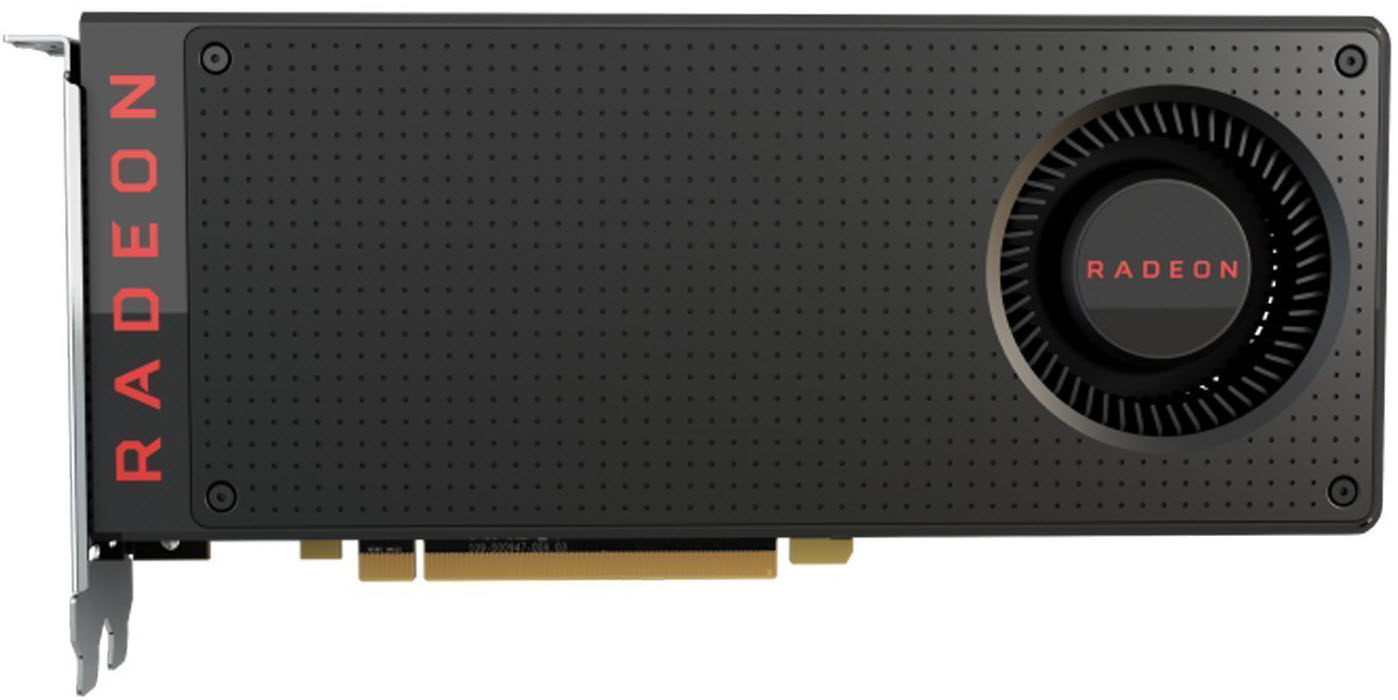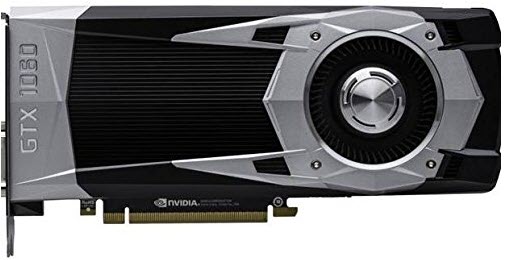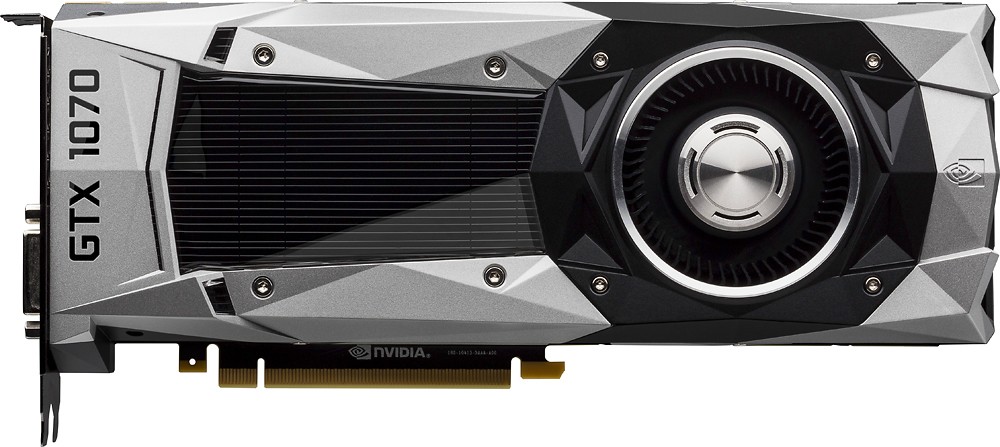GPUs for Crypto Mining
Introduction and Top Picks
Editorial Note: This article is a legacy piece that we have retained for historical purposes. Please note that the advice provided below was accurate as of 2018; therefore, it is now outdated.
Whether you're building a single cryptocurrency mining rig or an entire farm of them, the graphics card is the most important component for determining performance. Though mining is not a 3D workload, GPUs do most of the heavy lifting. A fast graphics card can help you mine more currency, more quickly but if it drinks juice through a firehose, you'll be sending all your earnings to the electric company.
In order to turn a tidy profit from your mining business, you need to buy a graphics card that is both powerful and power efficient. To help you choose, we tested over a dozen different cards, running them through a bevy of performance tests while measuring how much electricity they use and heat they generate. These are our five favorites.
Our expert review:
Reasons to buy
Reasons to avoid

AMD’s Radeon RX 580 is a popular choice with cryptocurrency miners for its excellent stock performance and (relatively) affordable price. Maximize the card’s efficiency by overclocking its GDDR5 memory, dialing down its core voltage, and pulling back on the Power Limit setting in a tuning utility like MSI Afterburner.
Our expert review:
Reasons to buy
Reasons to avoid

The Radeon RX 570 launched at a $170 (£160) price point, about $60 (£40) less expensive than the Radeon RX 580. Out of the box, however, it offers about 90% of the 580’s Ethereum hash rate. In fact, an optimized Radeon RX 570 is even faster than a stock 580 (with lower power consumption, too). Although it sells at a massive premium compared to AMD’s original MSRP, the Radeon RX 570 is still a top choice for cryptocurrency miners.
Our expert review:
Reasons to buy
Reasons to avoid

Nvidia’s Pascal architecture shines in comparisons of efficiency, and its mainstream GeForce GTX 1060 6GB stands out in particular. Although it isn’t as fast as AMD’s mid-range Radeons in stock form, our data shows the GeForce using a fraction of the competition’s power, leading to a big advantage in performance per watt measurements right out of the box. Just be sure to buy the 6GB version. Lower-end 3GB cards won’t be useful for mining Ethereum much longer.
Our expert review:
Reasons to buy
Reasons to avoid

Short of the uber-expensive GeForce GTX 1080 Ti and Titan Xp, Nvidia’s GeForce GTX 1070 is the fastest mining card in its desktop portfolio (the 1070 Ti is comparable, but more expensive). A 150-watt board power rating sounds high, particularly since it requires a power supply with an extra eight-pin PCIe connector. However, exceptional performance and efficiency offset this, yielding the top performance per watt available from an Nvidia card.
Get Tom's Hardware's best news and in-depth reviews, straight to your inbox.
Our expert review:
Reasons to buy
Reasons to avoid

The absolute top mining performance from a desktop graphics card comes from AMD’s Radeon RX Vega 56 and 64, due in part to their 8GB of HBM2 memory on a 2048-bit bus. But those two cards are also the most egregious consumers of power (though optimizing their voltages, clock rates, and temperature limits help immensely). While it’s tempting to favor the flagship for its brute force, an optimized Radeon RX Vega 56 actually serves up superior performance per watt, and at a lower price.
MORE: Best Graphics Cards
MORE: Desktop GPU Performance Hierarchy Table
MORE: All Graphics Content
-
abryant Archived comments are found here: http://www.tomshardware.com/forum/id-3675386/gpus-ethereum-mining-tested-compared.htmlReply -
Stevemeister We should be reporting that the worst cards for mining are high end graphics cards . . . .maybe then demand will drop and prices come back to earth. . . . . . I've seen GTX970's selling used for more than I paid new a few years ago . . . .something is wrongReply -
Myrmidonas Any article about cryptocurrency, that helps miners further, is against gamers since it promotes cryptocurrency and affects prices go higher and drop availability of GPUs.Reply
As a gamer, I do not like that. -
salgado18 These articles are a disservice to the gamer community.Reply
On the other hand, it's their business to speak about hardware in every area, not just games.
As sad as it makes us, that's just Tom's doing their job. We shouldn't pick on them, we should pick on miners and maybe manufacturers (who don't make specialized hardware and let gaming cards take the price hit). -
yoncenmild Gamers complaining about crypto mining need to reevaluate their perspective. You can either complain that the situation is unfair and demand that someone else do something about it. Or you can accept the situation as reality and figure out a way to use it to your advantage.Reply
I've never been able to justify spending too much on the GPU for my personal rig. I only play an hour or so a week and mostly older RTS games.
I've been able to upgrade my GPU for free several times just by mining crypto overnight. I went from a R9 290x to a RX580 4GB to dual 580 8GB for free. I purchased the 290X used for $213 before the mining craze really took off so I basically got my 580s for $111.5 each and I'll be upgrading to a pair of Vega 64s before the end of the year.
Buy an "overpriced" GPU mine with it overnight and it will eventually pay for itself. Or just complain about how unfair it is, your choice. -
justin.m.beauvais Just as an experiment, I'd like to see how the Titan V mines. The thing is a monster, and very power efficient.Reply -
theyeti87 Reply20956945 said:Gamers complaining about crypto mining need to reevaluate their perspective. You can either complain that the situation is unfair and demand that someone else do something about it. Or you can accept the situation as reality and figure out a way to use it to your advantage.
I've never been able to justify spending too much on the GPU for my personal rig. I only play an hour or so a week and mostly older RTS games.
I've been able to upgrade my GPU for free several times just by mining crypto overnight. I went from a R9 290x to a RX580 4GB to dual 580 8GB for free. I purchased the 290X used for $213 before the mining craze really took off so I basically got my 580s for $111.5 each and I'll be upgrading to a pair of Vega 64s before the end of the year.
Buy an "overpriced" GPU mine with it overnight and it will eventually pay for itself. Or just complain about how unfair it is, your choice.
Not everyone is in your situation, though. To say "I only play 1 hour of RTS so I don't need a fancy GPU" is your personal perspective. "Mine overnight, things will pay for itself" - seriously doubt your claims here.
